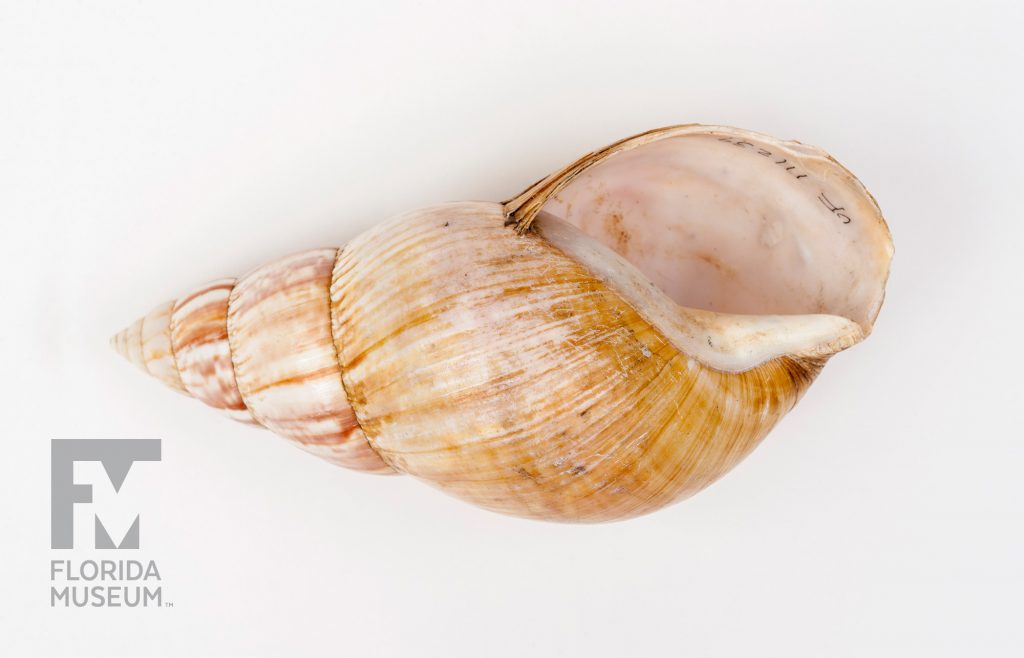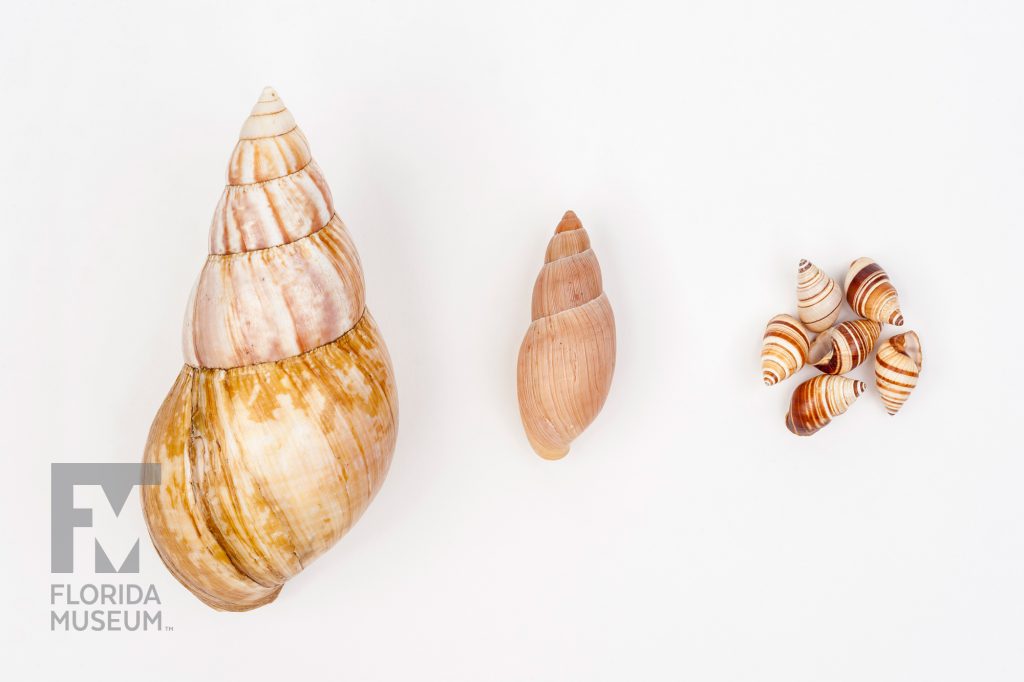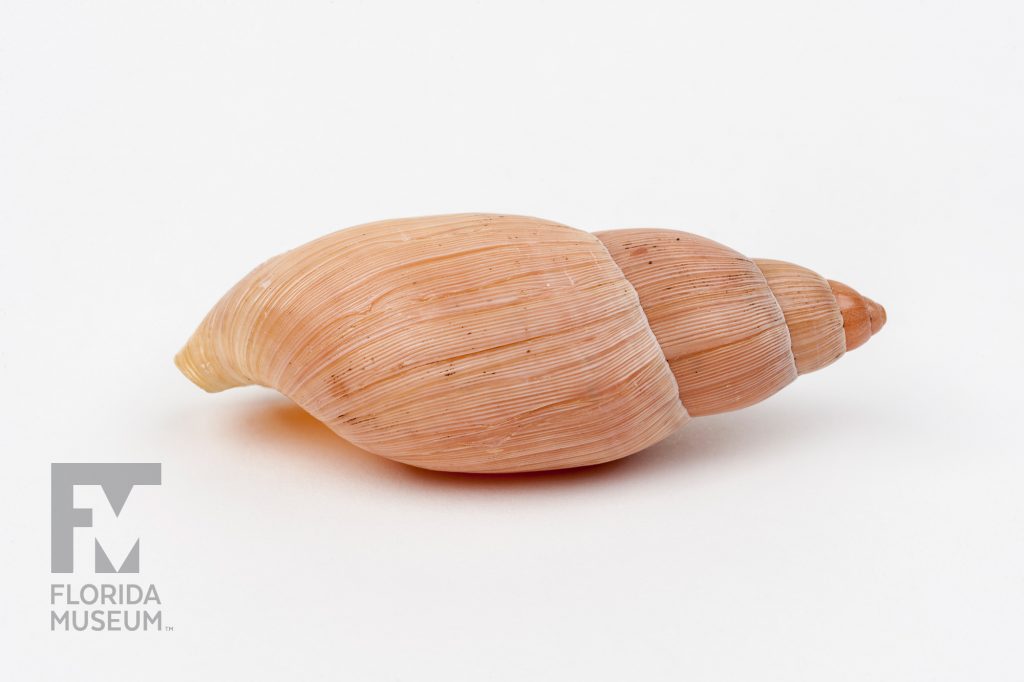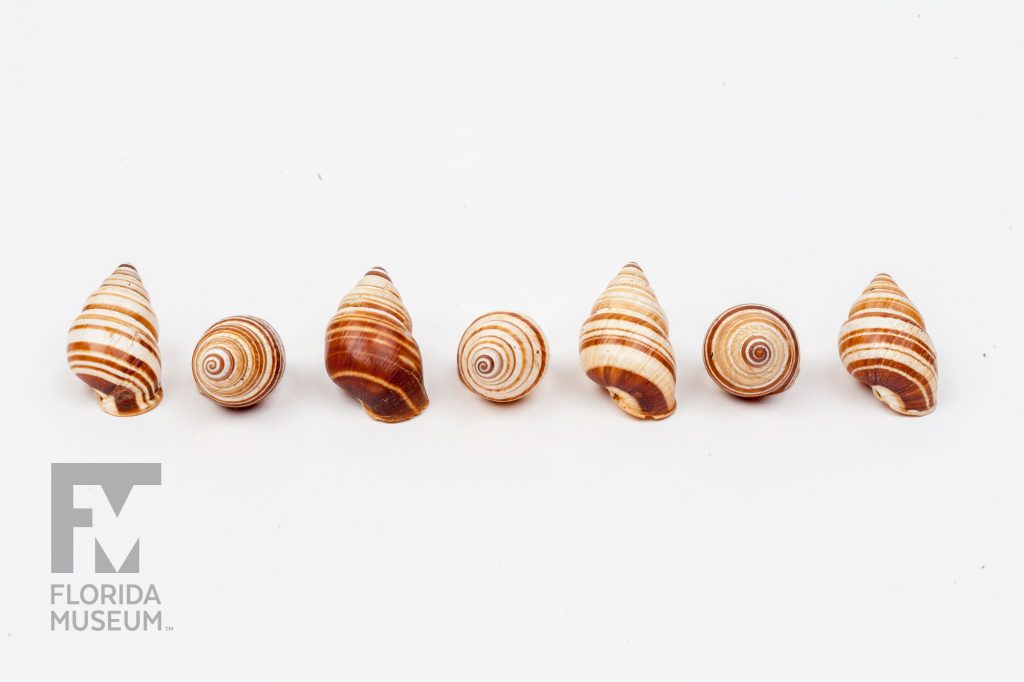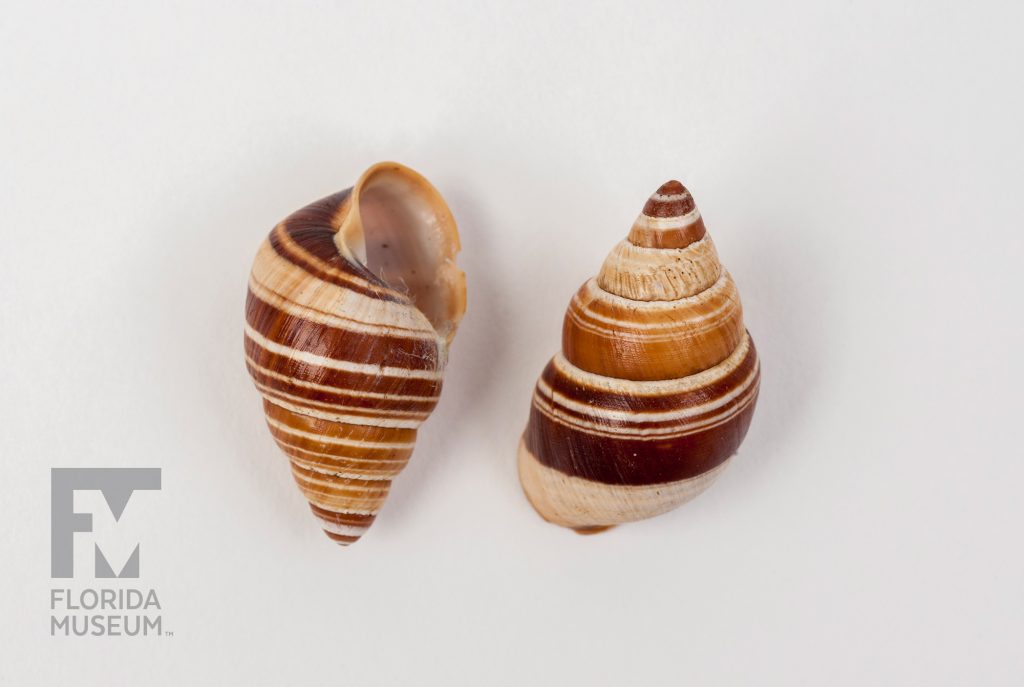Predators, like Florida’s Rosy Wolf Snail, were introduced to many Pacific islands to control invasive snails such as the Giant African Snail. Unfortunately, these introductions had no impact on the invasive target species, and instead devastated the native snail populations.
Summary
Native and Invasive Land Snails
Hawaiian Snails (Partulina virgulata)
From Molokai Island, Hawaii, 1900s-1960s
Giant African Snails (Lissachatina fulica)
From Mariana Islands, North Pacific Ocean, 1950
Rosy Wolf Snail (Euglandina rosea)
From Gulf Co., Florida, 1983
Collection
Story
More than half of all animal extinctions recorded in the past 500 years have been of mollusks, particularly snails and clams. The majority of these extinctions have been land snails from Pacific Islands and are the result of habitat loss the introduction of predators to isolated island groups.
One of the most infamous examples of this is the introduction of Florida’s Rosy Wolf Snail, a predator of other snails, brought from Florida to the Hawaiian Islands to try and control populations of the Giant African Snail that had been accidentally brought to Hawaii in the 1940s. The Giant African Snail quickly became an abundant and serious agricultural pest prompting efforts to control its populations, including the introduction of the Rosy Wolf Snail. Unfortunately, the 2-inch-long predator preferred the small native species to the much larger agricultural pest and populations of native snails quickly declined, resulting in the loss of more than half of Hawaii’s native snails and leaving most of the rest on the brink of extinction. The Wolf Snail was later introduced to many other Pacific islands in similar control efforts. The Hawaiian Islands were home to more than 850 different land snail species, only a little less than the 1100 snails found in the mainland of the U.S., but in a much smaller area. This episode is probably the single-most catastrophic extinction event in modern times.
John Slapcinsky
Collection Manager, Invertebrate Zoology*
Florida Museum of Natural History
Exhibit
On display Sept. 23, 2017-Jan. 7, 2018, Rare, Beautiful & Fascinating: 100 Years @FloridaMuseum celebrated the Museum’s rich history. Each Museum collection was asked to contribute its most interesting items and share the stories that make them special. Though the physical exhibit is closed, this companion website remains online, providing an opportunity to experience the Florida Museum’s most treasured specimens.
Exhibit Area: On the Brink
Theme: Warning Story
 Want to see more? Explore more than 300 breathtaking color photos of plants, animals, fossils and cultural heritage materials from the Florida Museum of Natural History’s collections in the award-winning book All Things Beautiful available from the University Press of Florida.
Want to see more? Explore more than 300 breathtaking color photos of plants, animals, fossils and cultural heritage materials from the Florida Museum of Natural History’s collections in the award-winning book All Things Beautiful available from the University Press of Florida.
*This title was accurate at the time the exhibit was on display in 2017. Please visit the collection website to verify current staff and student information.
